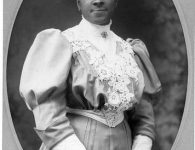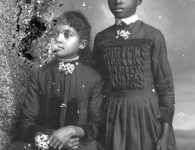
OPENING RECEPTION:
MONDAY, SEPTEMBER 12, 2016 • 6:00PM
CHECK OUR EVENTS PAGE FOR OTHER EXHIBIT-RELATED EVENTS.
Purchased Lives: The American Slave Trade from 1808 and 1865 exhibition covers a 57-year period, from America’s abolition of the international slave trade through the end of the Civil War. During this time, more than two million people were forcibly moved within the boundaries of the United States and its territories, wreaking havoc on the lives of enslaved men, women and children. Owners and traders in the Upper South—Maryland, North Carolina, Virginia and Washington, DC—sold and shipped surplus laborers to the expanding Lower South. For many enslaved people their long and difficult journeys led them to New Orleans—the largest slave market in antebellum America—where they were then sold and scattered to points across Alabama, Florida, Louisiana, Mississippi and Texas.
The exhibition includes more than 75 original items, including period broadsides, paintings and prints illustrating the domestic slave trade, ship manifests and first-person accounts from slave narratives and oral histories. The display also includes a collection of “Lost Friends” ads placed after the Civil War by newly freed people attempting to locate family members. Three interactive displays will allow visitors to engage directly with the historical record, including a database tracking the shipment of more than 70,000 people to New Orleans from other US ports.
Curated and originally hosted by The Historic New Orleans Collection, the display examines one of the most challenging eras of U.S. history. It is made possible in part by the National Endowment for the Humanities.



Slave Auction; ca. 1831; ink and watercolor; The Historic New Orleans Collection, 1941.3

Hoeing Young Cotton; between 1865 and 1895; albumen stereograph photoprints mounted on board by Samuel Tobias Blessing, photographer; The Historic New Orleans Collection, 1979.221.14

Slave collar with bells; between 1800 and 1865; iron and brass; courtesy of the Holden Family Collection

Auction scene; between 1830 and 1850; oil on canvas; courtesy of Matilda Gray Stream Collection, Evergreen Plantation

Livery coat from the household of Dr. William Newton Mercer; between 1857 and 1865 (conserved in 2015); wool with silver and pewter buttons and silk, wool, cotton, and linen lining; by Brooks Brothers, manufacturer; The Historic New Orleans Collection, 2013.0115.1
Source:
article via https://www.civilrightsmuseum.org/purchased-lives




















No comments